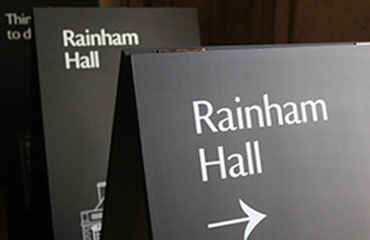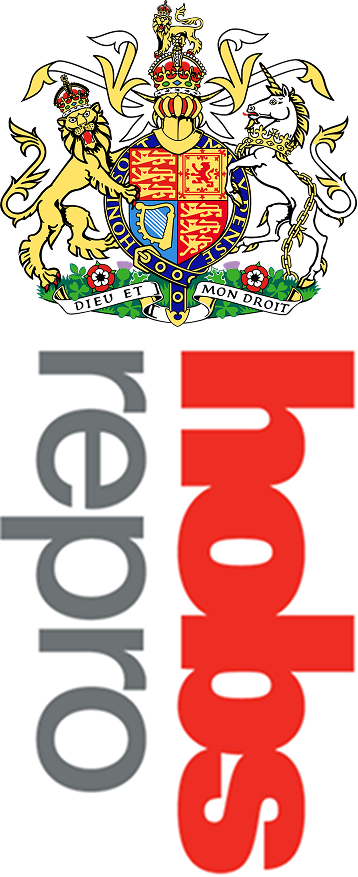18th Century Signage

Challenge
Rainham Hall is an 18th Century house on the far eastern fringes of London. 70 years after the National Trust inherited it, and after undergoing a £2.5 million conservation project, this Georgian house is now open to the public. A few months before the opening, Rainham Hall approached Hobs for help with creating signage for both inside and outside the building itself and for a new exhibition.
Key Challenges
- The signage needed to be consistent with Rainham Hall’s minimalist & contemporary branding
- Internal and external signage was required
- A mix of temporary, permanent and amendable signage was needed across the entire site
Solution
As moveable free-standing A-boards were needed for both inside and outside areas, some would have fixed information printed onto them, whereas others would need to change as the exhibition names and prices changed.
Chalkboard is a classic, yet still modern, solution for signage where information changes regularly. Hobs provided different samples of how printing onto chalkboard can work as signage. The final choice was ‘overprinting’ the chalk board with white ink, a process of printing the same area twice to get a strong crisp printed finish.
This overprinting process was also used for the ‘Hall Admission’ and ‘What’s On’ boards, which were portrait chalkboards in a wooden frame, that were hung in the entrance. A permanent information board, detailing the rooms visitors can explore, was made from wood and also printed with white ink.
A permanent lost property board added character to the collection of branded signage with illustrations of clothing and accessories, and text, printed in white on black foamex. Holes were made throughout the sign, for wooden pegs to hang lost items on.
A number of signs were used at entrance points of the exhibition to explain different areas of John Harle’s life including a family tree and description of the exhibition. ‘Kapa Tech’ board was used for these signs which is composed of foam core with an aluminium skin so it’s both light-weight, rigid and fire retardant. The boards were placed into a fabricated frame.
For specific sections of the exhibition, Hobs provided white dibond signs with text printed in black. The colour scheme was flipped to black text on white, to be consistent in style but to draw focus to the stories and facts in the exhibition spaces.
Result
The John Harle exhibition is still open to the public and has been a great introduction to a beautifully renovated Grade II* listed building.
